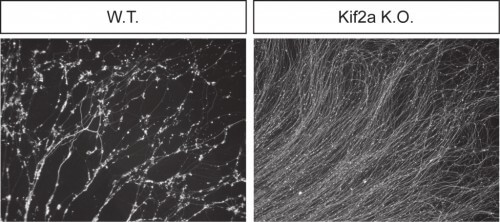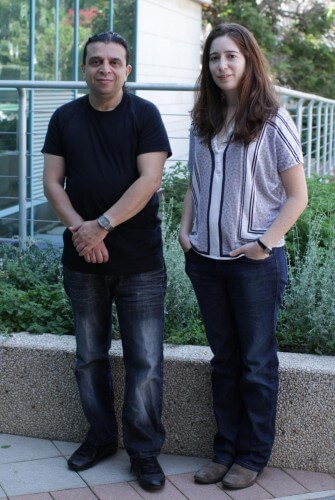Dr. Avraham Yaron and research student Maya Maor-Noff, from the Department of Biological Chemistry at the Weizmann Institute of Science, recently discovered a factor that plays a central role in the pruning of nerve cells

Similar to trees that bud in the spring, during the development of the nervous system the nerve cells send long and thin branches called axons to all parts of the growing body. At another glance, it is possible to notice that this is a well-kept and orderly gene: during development, excess nerve cells, which are not necessary, are eliminated, and many of the axons are pruned. Careful gardening reshapes the nervous system as it develops and grows. This is one of the secrets to the successful operation of the system; There is evidence that disruptions in the process of remodeling the nervous system cause various neurological disorders, such as, for example, autism.
Dr. Avraham Yaron and research student Maya Maor-Noff, from the Department of Biological Chemistry at the Weizmann Institute of Science, recently discovered a factor that plays a central role in the pruning of nerve cells. "Before we can fully understand the processes involved in normal development or diseases of the nervous system, we must identify the main players in these processes," says Dr. Yaron. "Until now we only had very little information about their identity."
The pruning of the axons is not an external process but starts inside the nerve cells: long structures, called microtubules, which cross the axons along their length, are the first to break down. The microtubules serve both as a skeleton that stabilizes the structure of the axon and as a transportation system: diverse cargoes, including signaling molecules and other substances, travel back and forth on the microtubule track. The scientists sought to discover the mechanisms that control the disassembly of microtubules during axon pruning. A study of sensory nerve cells grown in culture showed that a factor called KIF2A does the job. Interestingly, KIF2A is also a member of the protein family that travels on the microtubules and transports various cargoes.
To better understand the role played by KIF2A in the development of the nervous system and in axon pruning, the institute's scientists received genetically modified mice from colleagues at the University of Tokyo, in which the KIF2A gene was damaged. In these mice, the axons grew normally, but the pruning process was delayed - the microtubules and the axon were kept as they are. As a result, the skin of the mice - a major target for the axons of sensory nerve cells - is dotted all over with countless nerve cells. These findings strengthened the hypothesis that KIF2A plays a key role in pruning - without it the process does not take place.
How does pruning take place? The research findings suggest that KIF2A is controlled by molecules known as neurotrophins, which play the role of "master gardener". The neurotrophins are found in the target tissues of the nerve cells (such as, for example, in the case of the sensory nerve cells tested in this experiment, the skin), and from there they "pull" the axons towards them, thus directing the growth of the nerve cells in the right direction and supporting their survival. However, the amount of neurotrophins is limited, so, in the end, the axons compete with each other for the signals they send. When the axon does not receive a neurotrophin signal, the KIF2A in it becomes active, and pruning is subsequently activated.

Maya Maor-Nof and Dr. Avraham Yaron. pruning
These steps create a process that at first glance may seem random, but actually has a large degree of order. In this way, strict control is maintained not only on the amount of axons, which is responsible for the optimal arrangement of nerve cells, but also on the sequence of stages of the pruning process, which are dictated by the genes. The gradual and planned progress ensures that if the first step - the disintegration of the microtubules - does not occur, the other steps will be delayed.
In a previous study by Dr. Yaron's group, which was done together with Dr. Eli Arma from the Department of Molecular Genetics, another mechanism that controls the remodeling of the nervous system was investigated: apoptosis (programmed cell death). Combining the findings of the two studies lays the foundations for understanding the development of the nervous system: a burst of growth and development, alongside pruning, thinning and weeding, which are done with discretion. According to Dr. Yaron, discovering the point of balance between the two conflicting processes, and understanding how it is achieved, will make it possible to get to the bottom of diseases caused by an imbalance. For example, there is evidence that the brains of autistic people are not sufficiently pruned, thus creating an excess of neural connections. Dr. Yaron believes that abnormal activity of KIF2A may be involved in this.

One response
How can words such as normal and abnormal action be used in basic research?
If according to the definition there was such a being "a perfect person" who acts perfectly we could say about things that are not perfect that they are not normal.
But how can you even say about a creature that is the result of many mutations and natural selection that there is something wrong with it?
After all, in this sense, life itself is an abnormal action of inanimate matter.